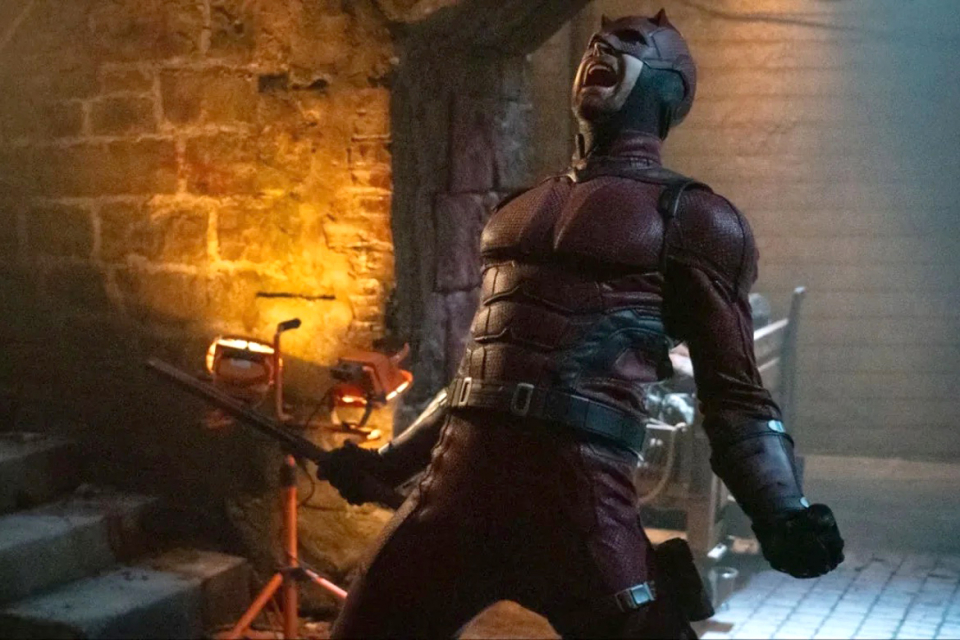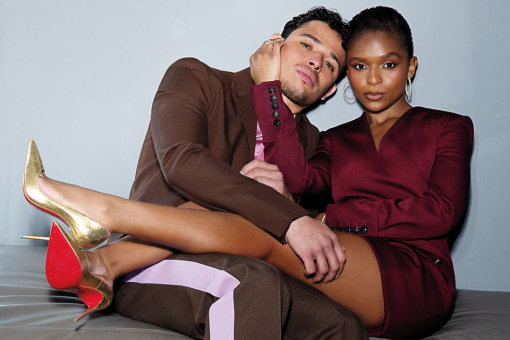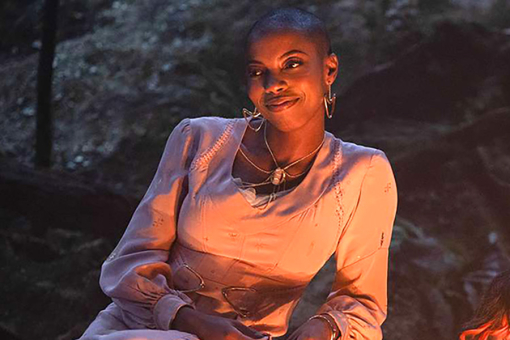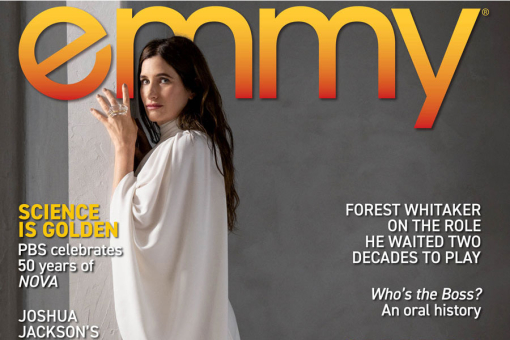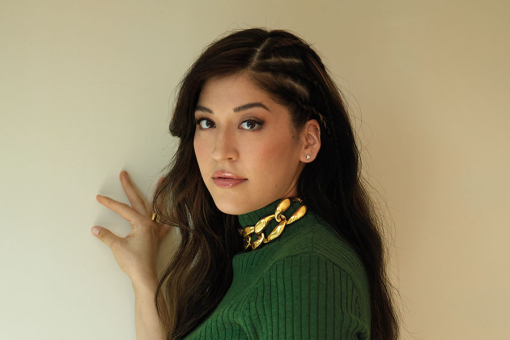SPOILERS for Daredevil: Born Again ahead.
Daredevil: Born Again directors Justin Benson and Aaron Moorhead believe that combining their talents and sensibilities is better, and more fun, than working alone.
Known as Moorhead&Benson, the two co-directed Disney+’s new Marvel series, Daredevil: Born Again, bringing an indie film approach to the show that picks up several years after the end of the Netflix series Daredevil, which ran for three seasons. The season finale of Born Again, which aired April 15, 2025, features a moment fans of the new series have been waiting for: A climactic fight between Frank Castle's Punisher (Jon Bernthal) and Matt Murdock's Daredevil (Charlie Cox).
Moorhead and Benson also co-directed Marvel’s Loki Season 2 and Moon Knight, as well as Jordan Peele’s The Twilight Zone and the Netflix series Archive 81. For Born Again's season finale, the filmmakers unpack both the intense episode and their filmmaker origins.
Television Academy: How did you two meet?
Aaron Moorhead: It was 2009, when I had just moved out to Los Angeles from Florida. I got an internship at RSA, which is Ridley Scott’s commercial production company. My expectation was that I was now Ridley Scott’s protégé. I walked through the door and realized that I’d never meet Ridley Scott, and my job would be what Justin would describe to me as...
Justin Benson: …carry people their mail, never make eye contact, drop off mail quickly, silently. If you see spare wires, make sure you stash those away. And I also advised him that when you’re broke and just out of school, as we were, it was expensive, so take what you can from the production company kitchen.
So you were both interns there.
Benson: I was in my gap year before I was to start medical school. I had always been a filmmaker. I wanted to take one last big shot at it, and I had never tried commercials. I quickly learned that commercials are not the entryway into becoming a director. So we saved up our pennies from bussing tables and from the random P.A. job we could grab, and we went out into the forest and made a $20,000 horror sci-fi movie [2012's Resolution]. We had no idea of the business expectations for it, or how it would be sold.
Moorhead: We didn’t understand film festivals. We didn’t know how big they were.
Benson: We burned off some DVDs, saved up more money for submission fees and somehow [Resolution] got into the Tribeca Film Festival and Fantasia in Montreal in 2012. So, we got unbelievably, cosmically lucky. As the lore goes, our screener was in the trash can in Tribeca at one point, and the rejection notes looked interesting, so the junior programmer picked it up out of the trash [and lobbied for it].
So why did you two decide to co-direct, instead of going solo?
Moorhead: We’d both been making amateur films independently for a decade prior to working together. The way that we understand filmmaking, to this day, is that it’s a lot less about the title director and more about [collaborating] to get the job done. I think it was Justin who said first that it makes a lot more sense, rather than me bringing you on as the DP, we should just call ourselves co-filmmakers, and just do what has to be done.

So with Daredevil: Born Again, what does co-directing look like?
Benson: [After Resolution], we made four more movies with that ethos before we got to Daredevil. What happens in those four movies is that we develop our own filmmaking style, our own process. In indie film, we’re not directors — we’re writers, directors, actors, editors, VFX artists. But, mostly, we’re writers-directors-actors. On Daredevil, it’s the most like independent film we’ve ever done.
Why did you direct just three episodes of the series?
Moorhead: There were six episodes of the series shot before the strike, and Marvel decided they wanted to go in a different direction. That’s when we boarded the show. We did episodes one, eight and nine, and we executive-produced to help bridge the gap. We guided the edits of the other ones. The scope of the job was to begin the season and end the season and help make it cohesive with the new direction.
One of the things we do in our indie films is genre-bending. Things can be funny the moment before things get dead serious. In fact, they inform each other really well. That genre-bending indie spirit is what we were hoping to bring to Daredevil while still keeping that sense of dread, that sense of hope and that sense of street level-ness where everything was really real and not supernatural and the consequences were that much heavier.
Describe the journey from the first episode to the finale.
Moorhead: As we were falling in love with the Daredevil character, one of the things that really spoke to us is the cosmic questions — your place in the universe and what it means, and is this all there is? Daredevil is, famously, a Catholic superhero, and even though you don’t see that many scenes in Born Again where he’s going into a church and praying, and looking distressed, the undertone of the entire season is the fact that he crossed a line in the sand.
When [Matt's] friend Foggy died, [Matt] tried to kill someone. So, in doing that, he felt like he fell from God’s grace. One of the big things that we wanted to do was make it feel like every action was an atonement and a way for him to become worthy again. Because we got to do the first episode and the last episodes, we were able to get that plane to take off and land in exactly the way we wanted it to.

What was the most challenging thing about directing the finale?
Benson: Frank Castle, the Punisher, and Matt Murdoch, Daredevil, have polar opposite philosophies on how justice should be dispensed, in terms of whether you let who you view as the perpetrator live or die. Their fight scene was already wildly complicated because you have two different fighting styles. With Frank, you have to show the grotesque consequence of his philosophy. Matt has to be fighting and understand that he can’t stop Frank from being open to the kill. You’ve got two extremely complicated fight choreographies during a city blackout — also, the fight sequence has to tell the story of how these two people are different while showing that neither one is compromising their values.
Moorhead: They kind of team up, but Daredevil can’t help Frank kill someone. We had to figure out how to divide the room and divide our cinematographic styles where Daredevil is on Steadicam, in regular motion. For Frank, everything he is doing is handheld, feels dirtier, grotesque and is more about faces rather than moves.
In your work together, how do you make each other better?
Moorhead: If we were working solo, our work would be a lot more bland. I think there’s a craziness that we both allow each other to have. It makes it so we don’t ever get creatively complacent. Also, we hear that it’s really lonely at the top when you’re directing and there’s only one of you. We don’t know what that’s like.
What do you want people to get from watching the finale?
Moorhead: We want the audience to have expected the way that superhero shows end. You stand up and cheer and you’re ready to fight. Instead, you feel a couple of layers on top of all that. It has a wistfulness to it, a melancholy and even a nostalgia — on top of excitement for whatever we’re going to be doing in season two. But the bad guys won, and that feels strange. Ultimately, we’re ending with the world in a worse place than where it started.
Benson: There’s something so beautiful about stories in which the protagonist didn’t succeed. But it feels like a victory because you know they have the grit to keep pushing, even in the face of an outlook that’s not great. The victory is holding on to knowing that the meaning of everything is to make life better for everyone, no matter what.
This interview has been edited for length and clarity.
Daredevil: Born Again is now streaming on Disney+.

